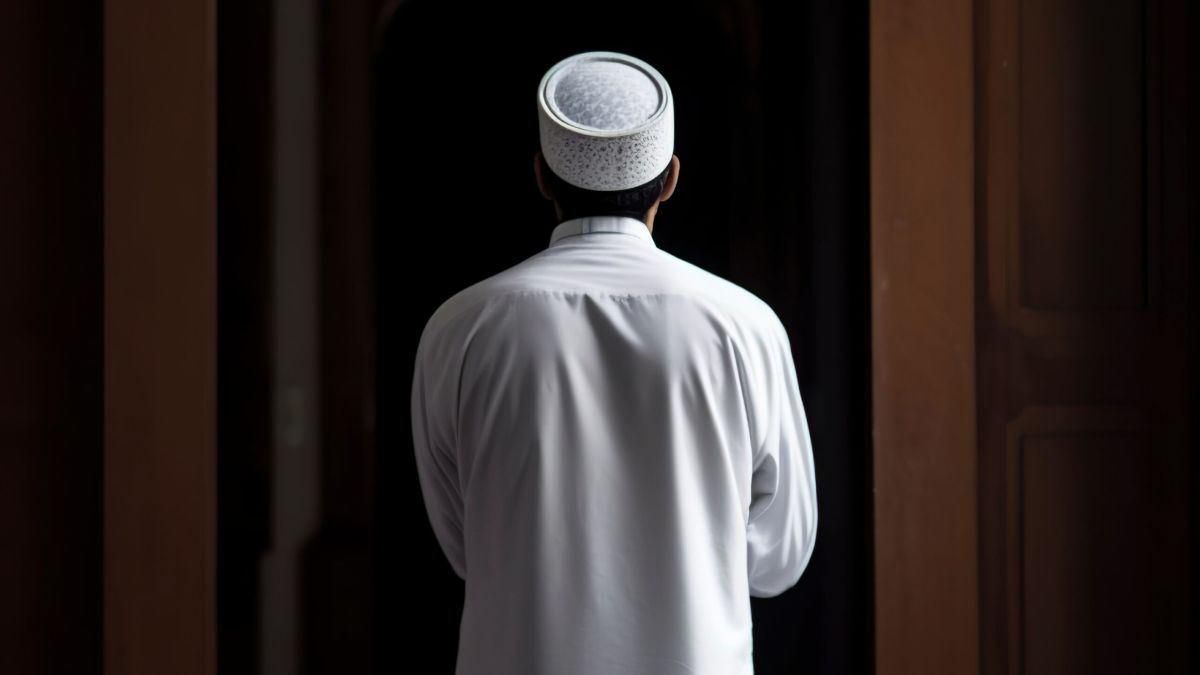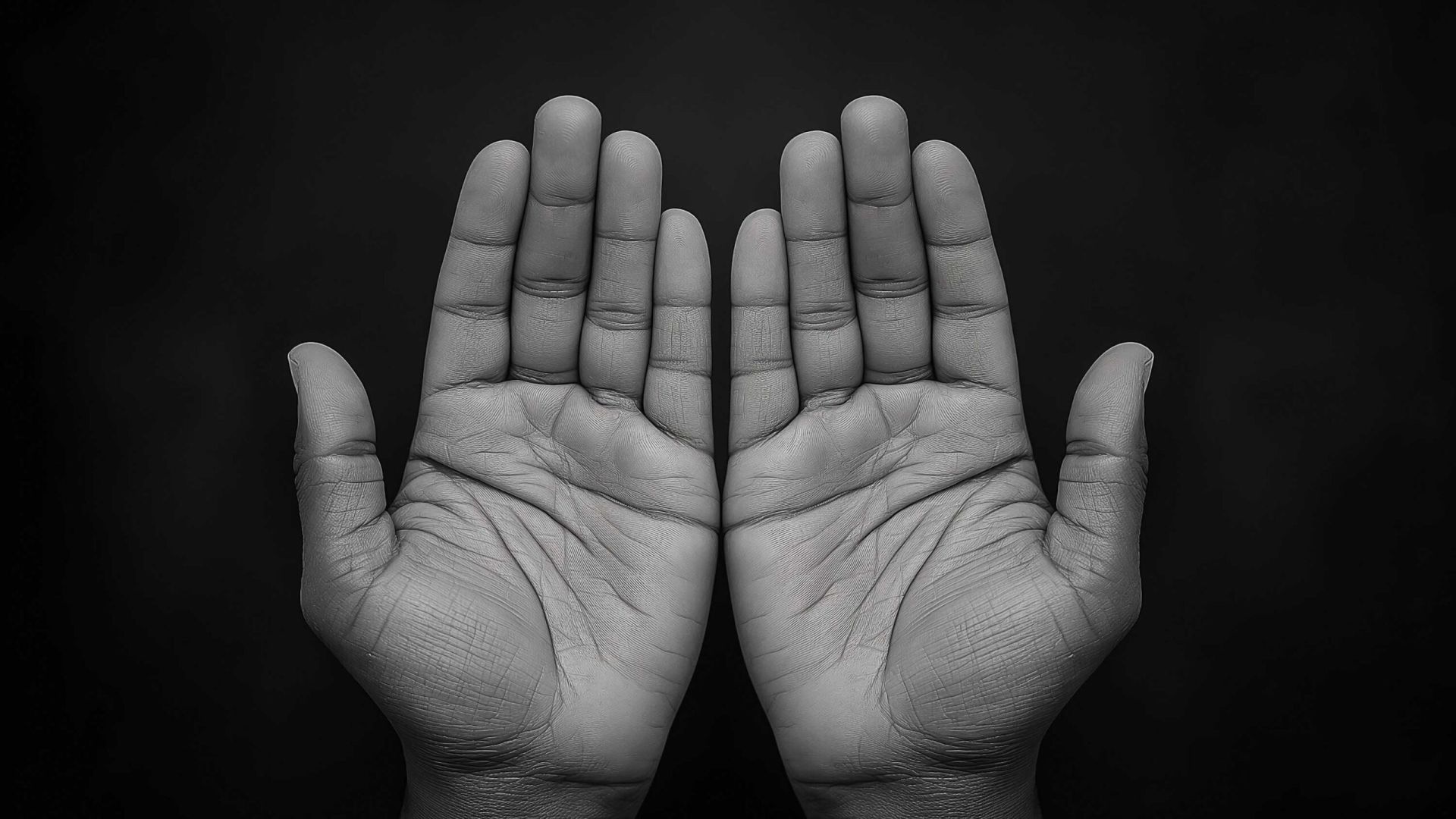Placement of the Hands When Standing in Ṣalāh
Imām Muḥammad ibn Ṣāliḥ al-ʿUthaymīn


After saying the takbīr and raising his hands, the Prophet (صلى الله عليه وسلم) would grasp his left wrist. There are also people that, after saying the takbīr and raising their hands, drop their hands first before clasping them together. There is no basis for this action. Rather, they should immediately clasp their left wrist following the raising of their hands. By ‘wrist’, we are referring to the bone that is anatomically next to the thumb. By grasping it, we mean the joint itself. This is the manner of praying that has been narrated in the Sunnah.1 It was also narrated in the Sunnah that he (صلى الله عليه وسلم) used to put his hand on his left forearm without grasping or holding it.2 Then, these are two different ways of putting one’s hands in ṣalāh: the first consists of holding while the second involves placing the hand.
[Q]: There are some people who we have observed holding their elbows. Is there any basis for this action?
[A]: There is no basis for this action. He may either grasp his left wrist or place his hand on his forearm. As narrated in Ṣaḥīḥ al-Bukhārī, on the authority of Sahl ibn Saʿd (رضي الله عنه): “The people were commanded such that a man should place his right hand on his left forearm when performing ṣalāh”.
After placing his hands together, according to the most famous opinion of the Ḥanbalī madh`hab, he (صلى الله عليه وسلم) would place both hands below his navel. This is evidenced by the ḥadīth of ʿAlī (رضي الله عنه): “It is from the Sunnah to place the right hand over the left and position them under the navel”.3 Other scholars have taken the opinion that the hands should be placed above the navel in ṣalāh. This is a narration from Imām Aḥmad.
Others have adopted the opinion that the hands should be placed on the chest during ṣalāh. This is the closest opinion to the truth in this matter. Although there is some debate surrounding the authenticity of the specific narration used to evidence this opinion, the apparent implication of the ḥadīth of Sahl ibn Saʿd in Ṣaḥīḥ al-Bukhārī indicates positioning the hands on the chest.4 The best ḥaḍīth used to evidence this opinion, despite the debate surrounding its authenticity, is the ḥadīth of Wāʾil ibn Ḥujr (رضي الله عنه): “The Prophet (صلى الله عليه وسلم) used to place both hands on his chest”.5
[Q]: We have observed some people positioning both hands towards the left sides of their bodies. When asked regarding this, they reply: This is the side of the body that holds the heart.
[A]: This reasoning is flawed due to the following:
- It opposes the Sunnah. Any reasoning that opposes that which is from the Sunnah must be rejected in the face of its postulator. For the Sunnah is more deserving of being followed than any deductive reasoning.
- The Prophet (صلى الله عليه وسلم) forbade that men should pray with hands on their hips (mutakhaṣṣir).6 The described manner of praying, even if this prohibition does not specifically apply, is close to it.
In consideration of this, if you happen to observe a person praying in this manner, advise him. There is also another precautionary matter that is inherent in this action which is the injustice that results from favouring the left side of the body over the right, avoiding the natural midline. The best of all matters is that which is middle or moderate. So, position yourself between the right and left sides and place your hands on your chest when praying.
Endnotes:
[1] Authentic: narrated by Abū Dāwūd: 727 with the wording: “placed his right hand on the back of his left, his wrist, and forearm.” Graded authentic by Shaykh al-Albānī. See Sunan Abī Dāwūd edited by Muḥī al-Dīn ʿAbd al-Ḥamīd.
[2] Authentic: narrated by al-Bukhārī: 740.
[3] Weak: narrated by Abū Dāwūd: 756 and graded weak by Shaykh al-Albānī (Sunan Abī Dāwūd edited by Muḥī al-Dīn ʿAbd al-Ḥamīd), Ibn Ḥajar (Fatḥ: 2:186), and al-Nawawī (al-Majmūʿ 3:313).
[4] Translator note: There is no mention of chest in the hadīth, nor is it alluded to in any way. Ibn Ḥajar said: “He has not mentioned the position of the two hands on the body here. Ibn Khuzaymah narrates on the authority of Wāʾil that it should be positioned on the chest.” Unless the Shaykh is speaking about another narration of Sahl concerning this matter that is also in Ṣaḥīḥ al-Bukhārī not previously alluded to here. And Allāh knows best.
[5] Authentic: narrated by Abū Dāwūd:759 and graded authentic by Shaykh al-Albānī. See Sunan Abī Dāwūd edited by Muḥī al-Dīn ʿAbd al-Ḥamīd.
[6] Authentic: narrated by al-Bukhārī: 1220.
Source: Al-Sharḥ al-Mumtiʿ 3: 35-38
Translated by: Riyāḍ al-Kanadī

















